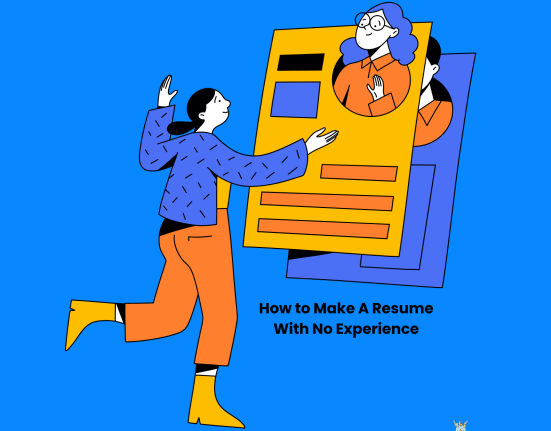The primary goal of every college student is to secure an internship, preferably a paid one. They often fill out numerous internship applications, but only a few get the job. As a result, the majority of students never experience an internship, which can also hinder their chances of finding a full-time job.
Whether it’s in the field of technology, design, marketing, or any other industry, the process of filling out an internship application, preparing a resume, and attending interviews is an art.
In this blog post, I will put up a few tips for you to prepare a good internship application. If you are interested in tech internships, I recommend reading my previous blog post about how to secure your first tech internship before continuing with this article.
Now, you have two months before 2024, which is enough to upskill and get ready for those interviews. Keep doing that! On top of that, let’s look at the 7 tips to increase your chances of landing an internship:
7 Internship Application Strategies
1. Research Companies You’re Interested In:
This is probably the first step you need to take care of. Before filling out an internship application, it is your duty to learn about the company and the job description.
Plus, our aim is to get an internship letter from a company you really want. We don’t believe in getting any random internship, do we?
- Step 1: Start by creating a list of companies that you are genuinely interested in. You can consider factors such as industry, company size, location, and culture.
- Step 2: Visit the company’s website and familiarize yourself with its products or services. This helps you understand their values, goals, mission, and how they work.
- Step 3: Now, cross your fingers and explore the “Careers” or “Jobs” section of their website to find internship listings. Take note of the specific qualifications and responsibilities for each position if you find any.
- Step 4: Identify key employees or team members through LinkedIn and other professional networking sites. These are the people who’ll get you an interview real quick!
If you find some companies with preferable openings, then voila! If you don’t, we can always look up job boards.
2. Triple Check Your Resume:
99% of internship applications get rejected because of faulty resumes. We all know that each application demands your resume to be tailored accordingly. (If you’re sending out the same resume to every job opportunity, you’re practically demanding to be rejected)
Anyway, in the process of editing a resume, we make mistakes. It could be a grammatical error, spelling mistake, wrong dates, links, skills, etc. And believe me when I say this – “While scanning a resume, the recruiters always catch the mistake first.” It’s their God’s gift! So:
- Step 1: Create a master resume with all your experiences, skills, and achievements. This will serve as your reference point for tailoring your resume.
- Step 2: For each internship application, review the job posting carefully and identify the skills and qualifications they prioritize. Highlight relevant sections on your master resume.
- Step 3: Craft a summary or objective statement that reflects your career goals and how they align with the specific internship you’re applying for.
- Step 4: Use action verbs to describe your past experiences, focusing on accomplishments and results. Quantify your achievements wherever possible.
- Step 5: Have a trusted friend or mentor review your resume to catch any typos or inconsistencies. Repeat this step at least thrice. If your friend denies checking your resume, offer them a samosa party. It used to work for me.
3. Prepare a Cover Letter for Internship Applications:
Just like a master’s resume, you also need a master’s cover letter for internship applications. Although the times have changed, you still need a cover letter for many opportunities.
Yes, I know the cover letter is not star-marked and not mandatory. But that doesn’t mean you’ll leave it blank and expect a callback.
- Step 1: Create a cover letter template that includes your introduction, skills, and how you plan to work at any firm. Keep it concise, ideally 150-300 words.
- Step 2: Customize the opening paragraph to address the specific company and role you’re applying for. Mention where you found the job posting.
- Step 3: In the body of the cover letter, explain why you’re a great fit for the position. Highlight your skills, experiences, and how they relate to the job requirements.
- Step 4: Tailor the closing paragraph to express your enthusiasm for the role and your desire to discuss your qualifications further in an interview.
- Step 5: Save each cover letter with a unique file name that includes the company’s name and the position for easy reference. This is a small gesture, but it shows your attention to detail.
If you’re writing a cover letter for an internship with no experience, don’t make it sound like ‘no experience’. Display your experience in terms of skills you’ve learned and projects you’ve worked on.
Read this article by NovoResume – How to write a cover letter

4. Google Yourself:
You won’t believe, a lot of employers do this. They Google you! Here’s a story –
I applied at a company for a freelance writer role. And this was their response – “Hey Sushrut, we checked you out on Google and the results are filled with your social media profiles, viral posts, and articles.”
Don’t believe me? Search Sushrut Mishra on Google, you’ll get this:

Now, this is not a brag. But a lesson for you to start building your digital footprint.
- Step 1: Perform a Google search with your name to see what information about you is readily available online. Check images, news, and web results.
- Step 2: Review your social media profiles, such as Facebook, Twitter, Instagram, and LinkedIn. As our aim is a professional benefit, focus on LinkedIn and Twitter as much as you can.
- Step 3: Immediately create a LinkedIn profile if you don’t have one. Complete it with a professional photo, a comprehensive work history, and a compelling summary. Your LinkedIn profile is your resume 2.0.
- Step 4: Monitor your online presence regularly to ensure that any new content or updates portray you in a positive and professional light.
The best way is to start posting daily about your learnings. Share what you learn and build. That is more than enough.
5. Build Connections with Potential Employers:

Remember step one, where we built a list of desired companies and their authority figures? This is where we are going to use them.
- Step 1: Create a complete LinkedIn profile, including a professional photo and a well-written summary. Now, start reaching out to the people from your list. Ask them if they’d like to hire you. Keep it short and simple.
- Step 2: Follow and connect with some more companies you’re interested in. Join relevant groups and participate in discussions to establish your presence in the industry.
- Step 3: Attend industry events, career fairs, and networking meetups in your area or virtually. Prepare a brief elevator pitch to introduce yourself.
- Step 4: Actively engage with your network by commenting on posts, sharing valuable content, and sending personalized messages to connections.
- Step 5: Seek informational interviews with professionals in your field of interest. These conversations can provide insights and potentially lead to internship opportunities.
In short, BE SEEN. What is seen is sold!
6. Filling Internship Applications is dead. Do Cold Outreach:
This one is self-explanatory, right? And all the talk about connecting with people, building your social footprint, and networking leads up to this point.
- Step 1: Identify the key decision-makers or hiring managers within the companies you’re targeting. This information can often be found on the company’s website or LinkedIn. This is exactly the list I asked you to prepare in the first strategy.
- Step 2: Create a few concise and personalized email or LinkedIn messages that express your interest in their company and explain how your skills align with their needs.
- Step 3: Be respectful of their time and keep your outreach message brief and to the point. Clearly state your intention and request a conversation or interview.
- Step 4: Follow up with a polite message if you don’t receive a response after a reasonable period. Industry experts say – Follow up at least 3 times and at most 5 times.
- Step 5: Keep a record of your outreach attempts and responses for future reference. Reflect on the rejections.
7. Prepare for Behavioral Rounds:
This is where most of the applicants get tricked. You clear technical rounds and relax during behavioral rounds. Don’t do that. Companies today are very concerned about who they hire. Behavioral rounds are as important as technical rounds.
- Step 1: Compile a list of common behavioral interview questions, such as “Tell me about a time when you faced a challenge at work”, “Tell me about yourself”, or “What are your strengths and weaknesses.”
- Step 2: For each question, prepare specific, detailed examples from your past experiences that highlight your problem-solving, teamwork skills, and human nature.
- Step 3: Practice your responses to these questions, either with a friend or by recording yourself. Focus on being concise and structured in your answers. Sometimes, it’s not what you speak, it’s how you speak.
- Step 4: Research the company’s culture and values to align your behavioral responses with their specific expectations.
- Step 5: During interviews, actively listen to the questions, take your time to respond thoughtfully, and use the STAR (Situation, Task, Action, Result) method to structure your answers. Google it!
Conclusion
On top of the 7 internship application strategies mentioned above, there is one more super-important tip: Iteration and Improvement. Truth be told, no matter how skilled and talented you are, there will be times when you’ll have to face rejections.
The point is to stick to these tips and iterate. Although these tips don’t guarantee an internship, they do increase the chances of getting it. Keep in mind – Tailor your approach for every opportunity, build up your digital footprint, and work towards your personality.
And oh, don’t focus too much on these strategies so that you forget about upskilling!











Leave feedback about this